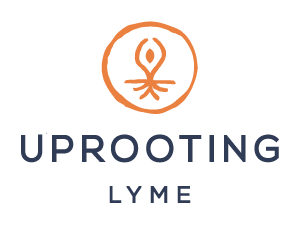
IS CANNABIS BENEFICIAL FOR LYME DISEASE? A Look At History Reveals The Truth
Rumors of cannabis oil or medical marijuana performing miracles in the Lyme, cancer, and other chronic disease circles are growing.
On the other hand, many people have questions and concerns about its safety and legal status. Some of my patients – when I first suggest it as part of their treatment protocol – are not sure how to understand the new use of cannabis as medicine versus the illegal smoking of marijuana as a recreational substance.
This blog article will shine some light on the history of cannabis use so that you can connect with the depth and breadth of its use in medicine until very recently in human history.
A Brief History of Cannabis Use
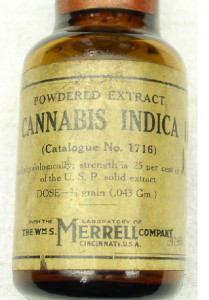 There are 3 species of cannabis – Cannabis sativa, C. indica, and C. ruderalis. The first 2 are the ones primarily used for medicine throughout human history. The cannabis plant is also commonly known as hemp. Records and artifacts indicate that the cannabis plant has been cultivated by humans for over 10,000 years.
There are 3 species of cannabis – Cannabis sativa, C. indica, and C. ruderalis. The first 2 are the ones primarily used for medicine throughout human history. The cannabis plant is also commonly known as hemp. Records and artifacts indicate that the cannabis plant has been cultivated by humans for over 10,000 years.
In China, the earliest form of paper was made from hemp (since 4000 BCE). It was white, extremely durable, and resisted decomposing for long periods of time.
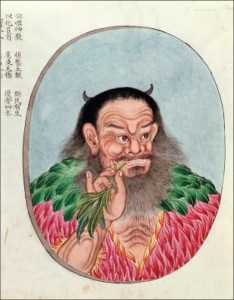 The first medical description of cannabis use was from China in 2737 BCE by the legendary herbalist, Shen Nong. Those records indicate that cannabis had already been in use for the treatment of malaria, women’s health issues, and many other diseases for more than 5,000 years.
The first medical description of cannabis use was from China in 2737 BCE by the legendary herbalist, Shen Nong. Those records indicate that cannabis had already been in use for the treatment of malaria, women’s health issues, and many other diseases for more than 5,000 years.
In ancient Mesopotamia, dating back over 10,000 years, hemp cords strengthened the pottery. In Taiwan, China and Turkestan hemp fabrics have been dated to 8000-4000 BCE.
Descriptions of its analgesic, antibiotic, and psychotropic affects on the body and mind date back to 800-2000 BCE from the Hindu sacred text and Chinese herbal texts. The famous Greek physician Galen regularly prescribed medical marijuana to his patients from 130-200 AD.
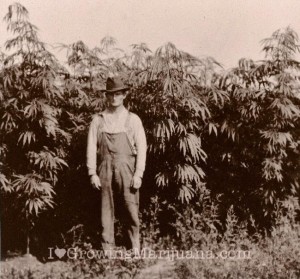 It was used throughout Europe, and thus Cannabis was cultivated by European immigrants since inhabiting the North American colonies in the 1600’s. It was used to make rope and sails for ships, as well as for cordage and cloth. During the 1700s hemp was also used for money. Prior to the Revolutionary War, the use of hemp was outlawed for cloth and weaving in order to make colonists dependent on British imports.
It was used throughout Europe, and thus Cannabis was cultivated by European immigrants since inhabiting the North American colonies in the 1600’s. It was used to make rope and sails for ships, as well as for cordage and cloth. During the 1700s hemp was also used for money. Prior to the Revolutionary War, the use of hemp was outlawed for cloth and weaving in order to make colonists dependent on British imports.
Ben Franklin started one of the nation’s first paper mills with hemp paper, and Thomas Jefferson drafted both the Declaration of Independence and the Constitution of the United States on hemp paper.
During WWII, hemp was grown for rope, clothing, military uniforms, shoes, ships’ rigging, parachute webbing, baggage, and more.
As it happened, powerful industry leaders of the early 19 th century – William Randolph Hearst of the timber, paper, and newspaper industries, William Dupont of the plastics, paints, and fossil fuels industries, and Andrew Mellon, US Secretary of the Treasury and owner of Gulf Oil to name the major players – pushed through legislation naming marijuana an illegal drug, which made it illegal to grow or own for either personal or industrial use.
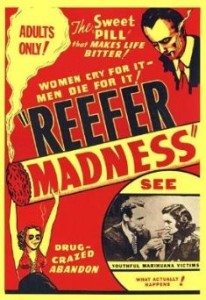 In addition to legislation, hemp became the object of the first “yellow” journalism campaign, in which the US government and the press worked together to popularize movies, publications, and books about the evils of marijuana, including the Narcotics Bureau’s invention of “reefer madness.” – the notion that use of marijuana leads to psychotic episodes, crime, rape, suicide, and more.
In addition to legislation, hemp became the object of the first “yellow” journalism campaign, in which the US government and the press worked together to popularize movies, publications, and books about the evils of marijuana, including the Narcotics Bureau’s invention of “reefer madness.” – the notion that use of marijuana leads to psychotic episodes, crime, rape, suicide, and more.
Marijuana continues to be regarded as a Schedule 1 drug by the federal government, reflecting a “high potential for abuse and no medical value,” – despite loads of evidence to the contrary.
Valid questions have been raised about the pharmaceutical industry’s influence and desire to stifle competition from the broad use of medical marijuana, which would no doubt lead to a decline in the use of many patented pharmaceutical drugs for common health problems such as nausea, anxiety, pain, and insomnia.
In 1997 the Institute of Medicine did a comprehensive study of the medical efficacy in cannabis therapy, and their conclusions were that cannabis is safe and effective, that patients should have access to it, and that the government should expand funds for further research and drug development of marijuana. The federal government ignored these findings and has refused to act on these recommendations.
Between 2001 and 2009 the Bush administration intensified the War On Drugs, targeting both patients and doctors across the state of California and elsewhere in the nation who used marijuana as medicine.
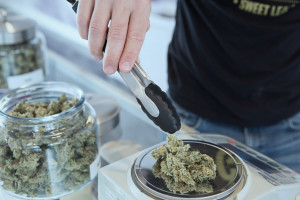 However, it seems the tide is finally turning in favor of medical marijuana usage. With 22 states now having legalized its use to some extent, and many more states voting on medical marijuana legislation in the November 2016 elections, medical marijuana is an unstoppable growing trend.
However, it seems the tide is finally turning in favor of medical marijuana usage. With 22 states now having legalized its use to some extent, and many more states voting on medical marijuana legislation in the November 2016 elections, medical marijuana is an unstoppable growing trend.
When you know your history of therapeutic cannabis usage as a plant that evolved right with us through millenia, it’s easy to see that this extremely useful medicinal plant has great potential for healing and minimizing the suffering from many types of diseases and symptoms.
May you NOT be held back by false notions and associations of this plant with immoral behavior, or other such nonsense.
In an upcoming blog, we’ll look at how cannabis oil use applies to Lyme disease and common symptoms, plus some general guidelines for getting started – so keep an eye out for that as well!
If you are wanting holistic treatment for Lyme or other similar complex chronic diseases, simply call us at 845-687-6211 or email info@uprootinglyme.com to set up an in-person or virtual holistic Lyme consultation at reasonable rates. Together we’ll co-create a strategic holistic treatment plan. Receive the support and guidance you need to regain your health, strength and resilience. Contact us now!

